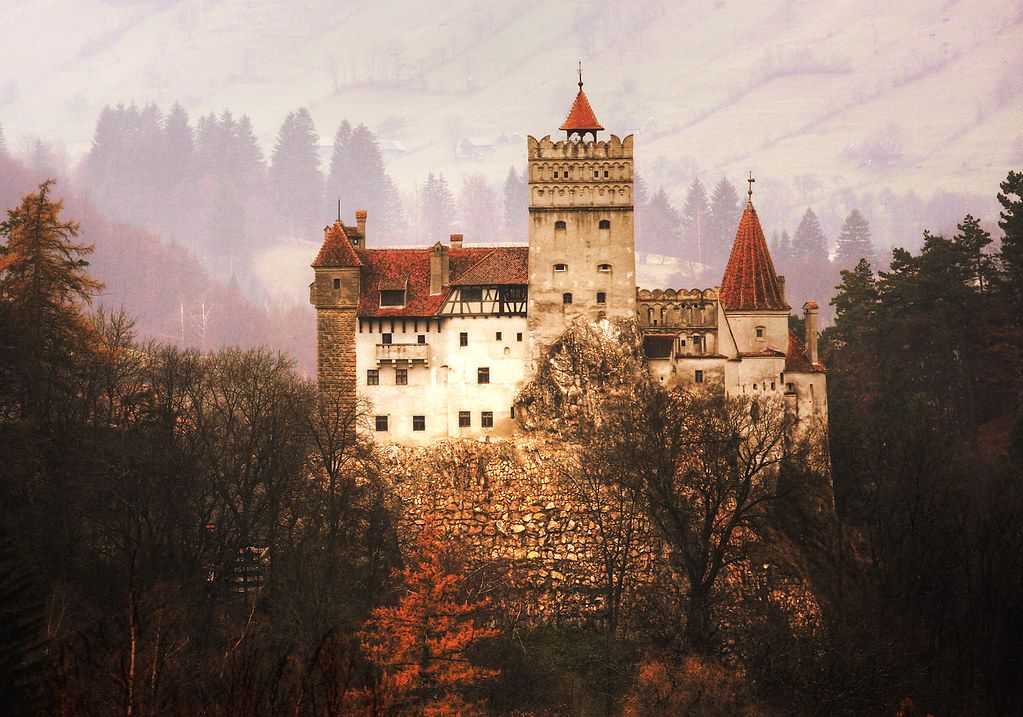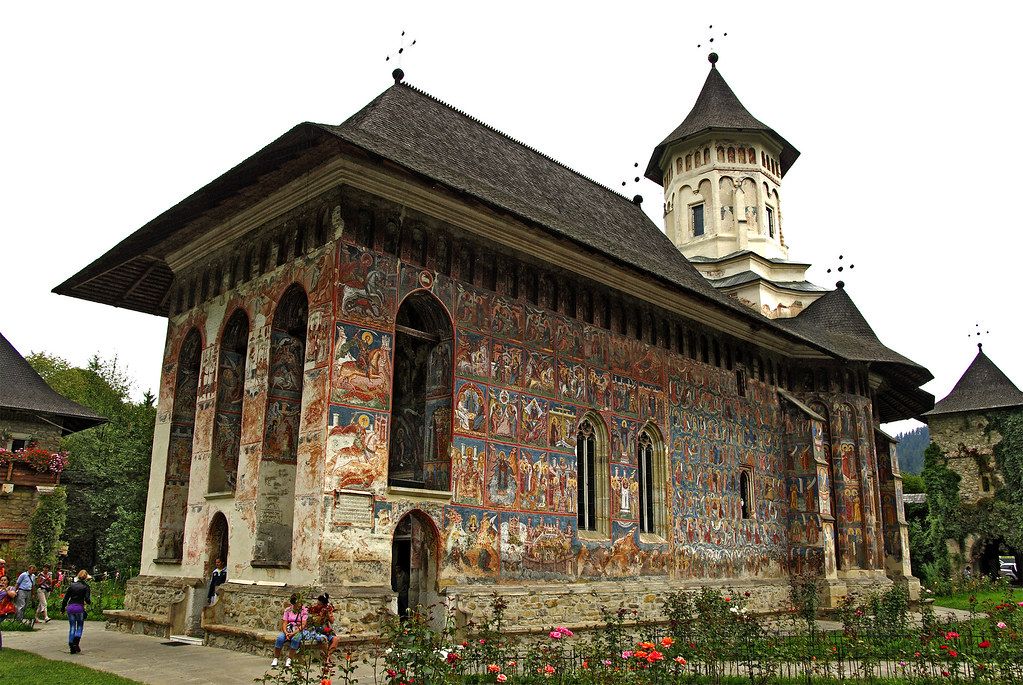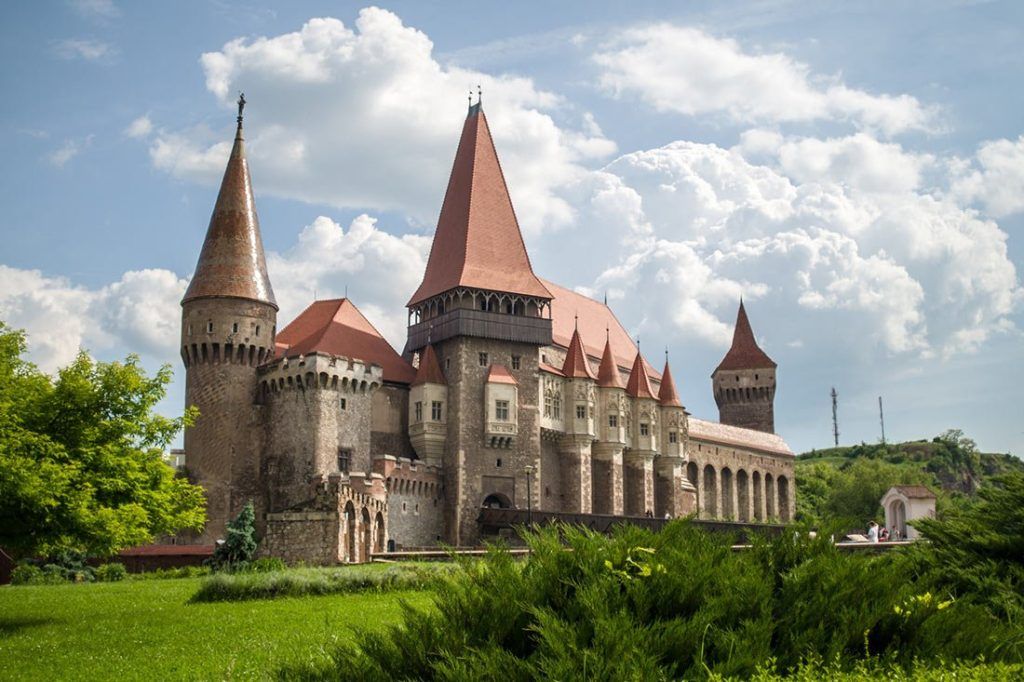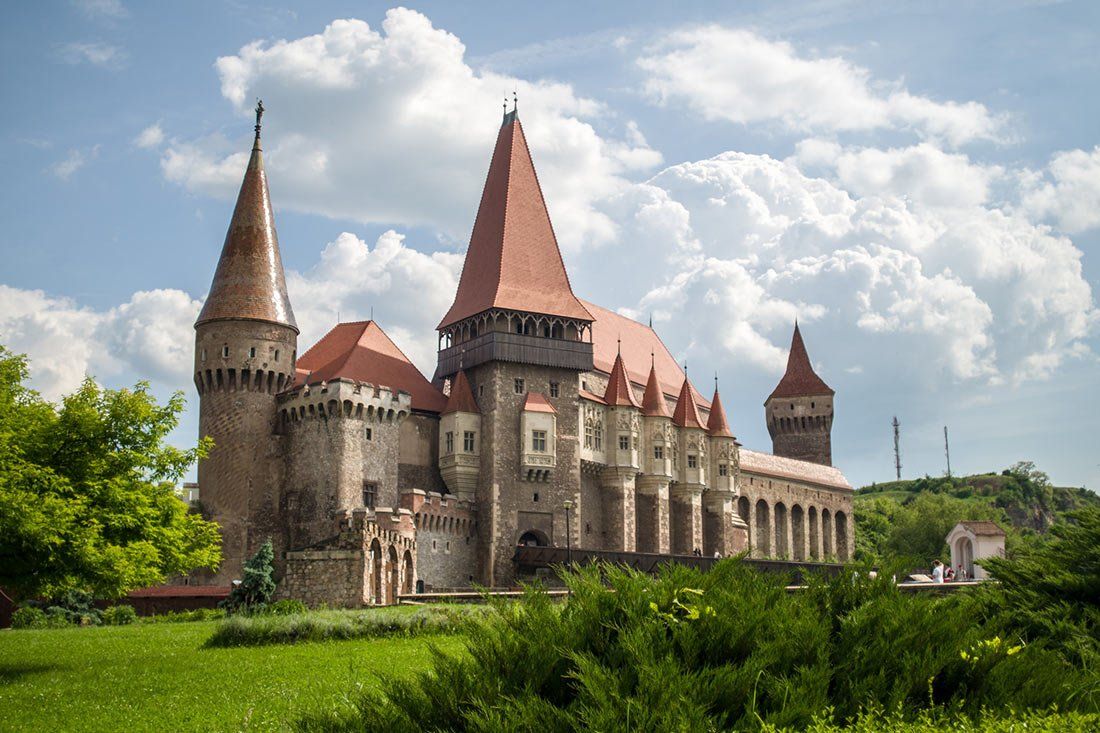Romania is a country full of fascinating history, culture, and natural beauty. Here are some of the best places to visit in Romania:
- Bran Castle – Also known as Dracula’s Castle, this 14th-century fortress is a must-visit for history and vampire lovers alike.
- The painted monasteries of Bucovina – These UNESCO World Heritage Sites are famous for their unique painted frescoes that adorn their walls.
- Peles Castle – This stunning neo-Renaissance castle in Sinaia is one of the most beautiful in Europe.
- Transfagarasan Highway – This winding mountain road is considered one of the most scenic drives in the world.
- Sighisoara – A UNESCO World Heritage Site, this medieval town is the birthplace of Vlad the Impaler, the inspiration for Bram Stoker’s Dracula.
- Corvin Castle – Located in Hunedoara, this Gothic castle
Lovely plces to Visit
Bran Castle, also known as Dracula’s Castle, is a must-visit attraction in Romania for history and vampire lovers alike. Located in the Transylvania region, the castle is steeped in legends and myths, and is famous for its connection to the famous novel “Dracula” by Bram Stoker. In this article, we will explore everything you need to know about visiting Bran Castle, including when to go, how to get there, and what to expect.

When to Visit Bran Castle
Bran Castle is open to visitors throughout the year, with varying opening hours depending on the season. During the summer months of June to September, the castle is open from 9 am to 6 pm daily.
In the winter months, from October to May, the castle is open from 9 am to 4 pm.
It is important to note that the last entry to the castle is one hour before closing time. To avoid the crowds, it is recommended to visit the castle early in the morning or later in the afternoon.
How to Get to Bran Castle
Bran Castle is located in Bran, a small town in the Brasov County of Romania.
The easiest way to get to Bran is by car or by bus. If you are coming from Brasov, which is the closest major city, you can take a bus from the Autogara 2 station to Bran.
The journey takes around 45 minutes and the fare is approximately 10 lei (less than 2 euros). If you are driving, you can follow the E574 road from Brasov to Bran. The journey takes around 30 minutes and there are several parking lots available near the castle.
What to Expect When Visiting Bran Castle
Bran Castle is an impressive fortress perched on a hilltop overlooking the town of Bran.
The castle was built in the 14th century and has been used as a royal residence, a military fortress, and a museum. Visitors can explore the castle’s history and legends by taking a guided tour, which is available in several languages, including English, German, and French.
The tour takes you through the castle’s many rooms and chambers, including the Great Hall, the Royal Apartments, and the Torture Chamber. You can also visit the castle’s museum, which showcases medieval weapons, armor, and furniture.
One of the highlights of visiting Bran Castle is the opportunity to learn about its connection to Bram Stoker’s novel “Dracula”.
While there is no evidence that Stoker ever visited the castle, he was inspired by the legends and myths surrounding Vlad the Impaler, who was the ruler of Wallachia, a region in southern Romania, in the 15th century.
Vlad was notorious for his cruelty and is believed to have been the inspiration for the character of Dracula.
The castle’s connection to the novel has made it a popular destination for vampire enthusiasts and fans of horror movies.
In conclusion, Bran Castle is a must-visit attraction in Romania for its fascinating history, stunning architecture, and connection to the legends and myths of Transylvania.
Whether you are a history buff, a vampire enthusiast, or simply looking for a unique experience, a visit to Bran Castle is sure to leave a lasting impression.
Don’t forget to bring your camera to capture the breathtaking views of the surrounding countryside from the castle’s towers and ramparts.
Monasteries of Bucovina
The painted monasteries of Bucovina, located in northeastern Romania, are some of the most impressive UNESCO World Heritage Sites in Europe.
The monasteries are famous for their unique painted frescoes that adorn their walls and depict religious scenes, events from the Bible, and the lives of saints.
In this article, we will explore everything you need to know about visiting the painted monasteries of Bucovina, including when to go, how to get there, and what to expect.
When to Visit the Painted Monasteries of Bucovina
The painted monasteries of Bucovina are open to visitors throughout the year, but the best time to visit is from May to October when the weather is mild and the landscapes are at their most beautiful.
During this period, the monasteries are open from 9 am to 6 pm. In the winter months, from November to April, the monasteries have reduced opening hours and are closed on Mondays.
To avoid the crowds, it is recommended to visit the monasteries early in the morning or later in the afternoon.
How to Get to the Painted Monasteries of Bucovina
The painted monasteries of Bucovina are located in the northeast of Romania, near the border with Ukraine. The easiest way to get to the monasteries is by car or by bus.
If you are coming from Bucharest, which is the capital of Romania, you can take a bus or a train to Suceava, which is the largest city in the region.
From Suceava, you can take a bus or a taxi to the monasteries, which are located in the towns of Voronet, Humor, Moldovita, Sucevita, Arbore, and Probota. It is also possible to take a guided tour that includes transportation and admission to the monasteries.
What to Expect When Visiting the Painted Monasteries of Bucovina
The painted monasteries of Bucovina are a collection of eight monasteries that date back to the 15th and 16th centuries.
The monasteries are characterized by their unique painted frescoes that cover their walls both inside and outside.
The frescoes are rich in detail and color and depict religious scenes, events from the Bible, and the lives of saints.
Each monastery has its own unique style and color scheme, but they all share a common theme of religious devotion and artistry.
Visitors to the painted monasteries of Bucovina can take a guided tour of the monasteries, which is available in several languages, including English, German, and French.
The tour takes you through the monasteries’ many rooms and chambers, including the church, the refectory, and the monks’ cells.
You can also learn about the history and significance of the monasteries and their role in the cultural and religious heritage of Romania.
One of the highlights of visiting the painted monasteries of Bucovina is the opportunity to see the frescoes up close and appreciate their beauty and artistry.
Visitors are also welcome to attend religious services and ceremonies, which are held daily in the monasteries’ churches.
The monasteries are still active centers of worship and spirituality, and visitors are asked to respect their traditions and customs.
In conclusion, the painted monasteries of Bucovina are a must-visit attraction in Romania for their unique artistry, history, and religious significance.
Whether you are a history buff, an art enthusiast, or simply looking for a unique cultural experience, a visit to the painted monasteries of Bucovina is sure to leave a lasting impression. Don’t forget to bring your camera to

Peles Castle, Romania
Peles Castle is one of the most impressive and picturesque castles in Romania. Situated in the picturesque mountain town of Sinaia, in the Carpathian Mountains, it is one of the most popular tourist attractions in the country.
In this article, we will explore everything you need to know about visiting Peles Castle, including when to go, how to get there, and what to expect.
When to Visit Peles Castle
Peles Castle is open to visitors all year round, but the best time to visit is between April and October when the weather is mild and the gardens are in bloom.
The castle is open every day from 9 am to 5 pm, except for Mondays and Tuesdays, when it is closed for maintenance. It is recommended to visit early in the morning or later in the afternoon to avoid the crowds.
How to Get to Peles Castle
Peles Castle is located in the town of Sinaia, which is approximately 120 km (75 mi) north of Bucharest, the capital of Romania. The easiest way to get to Sinaia is by car or by train.
There are several daily trains from Bucharest to Sinaia, and the journey takes about two hours. If you are driving, take the DN1/E60 national road from Bucharest to Sinaia, which takes approximately 1.5 hours.
You can also take a guided tour that includes transportation and admission to the castle.
What to Expect When Visiting Peles Castle
Peles Castle is a masterpiece of architectural and decorative arts that was built between 1873 and 1914 for King Carol I of Romania.
The castle has over 160 rooms, and each room is decorated with exquisite paintings, sculptures, and furnishings from around the world. Visitors to Peles Castle can take a guided tour of the castle, which is available in several languages, including English, German, and French.
The tour takes you through the castle’s many rooms and chambers, including the king’s apartments, the grand ballroom, the armory, and the theater.
You can also learn about the history and significance of the castle and its role in the cultural and political heritage of Romania.
One of the highlights of visiting Peles Castle is the opportunity to see the stunning views of the surrounding landscape.
The castle is surrounded by beautiful gardens, fountains, and terraces that offer breathtaking views of the Carpathian Mountains. Visitors can also take a stroll in the nearby forest and enjoy the fresh mountain air.
Peles Castle is a must-visit attraction in Romania for its unique architecture, artistry, and historical significance. Whether you are a history buff, an art enthusiast, or simply looking for a unique cultural experience, a visit to Peles
Castle is sure to leave a lasting impression. Don’t forget to bring your camera to capture the beauty of the castle and the surrounding landscape.
Transfagarasan Highway, Romania
Transfagarasan Highway, also known as DN7C, is a winding mountain road that stretches through the Carpathian Mountains of Romania.
It is one of the most scenic drives in the world, offering breathtaking views of the surrounding landscape. In this article, we will explore everything you need to know about visiting Transfagarasan Highway, including when to go, how to get there, and what to expect.
When to Visit Transfagarasan Highway
The best time to visit Transfagarasan Highway is between June and September, when the road is open and the weather is favorable.
The road is usually closed from October to May due to snow and ice, so it is important to plan your visit accordingly.
It is recommended to visit during the weekdays to avoid the crowds that usually flock to the road during the weekends.
How to Get to Transfagarasan Highway
Transfagarasan Highway can be accessed from either Bucharest or Brasov. The easiest way to get to the road is by car, and there are several car rental agencies in both cities.
The road starts at the village of Bascov, located about 150 km (93 mi) from Bucharest, and ends at the village of Cartisoara, located about 160 km (99 mi) from Brasov.
If you prefer public transportation, there are also several buses that run from Bucharest and Brasov to the nearby towns of Curtea de Arges and Cartisoara, from where you can take a taxi to the road.
What to Expect When Visiting Transfagarasan Highway
Transfagarasan Highway offers a unique driving experience, with its twists and turns, tunnels, and viaducts.
The road was built in the 1970s as a military route and was later opened to the public as a tourist attraction. The road spans over 90 km (56 mi) and reaches an altitude of 2,042 meters (6,700 feet) at its highest point.
Along the way, there are several parking areas where you can stop and enjoy the stunning views of the surrounding mountains and valleys.
One of the most popular attractions along Transfagarasan Highway is Balea Lake, a glacier lake located at an altitude of 2,034 meters (6,673 feet).
The lake is surrounded by mountain peaks and is a popular spot for hiking and photography. During the winter months, the lake freezes over, and a unique ice hotel is built on its surface.
Another popular attraction along the road is the Poenari Citadel, also known as Vlad the Impaler’s Castle.
The citadel is perched on a cliff and can be reached by climbing over 1,400 steps. The castle was once the stronghold of Vlad the Impaler, the inspiration behind Bram Stoker’s Dracula.
Transfagarasan Highway is a must-visit attraction in Romania for its unique driving experience and breathtaking scenery.
Whether you are a nature lover, an adventure seeker, or simply looking for a memorable road trip, a visit to Transfagarasan Highway is sure to leave a lasting impression. Just remember to drive safely and take your time to enjoy the stunning views along the way.
Sighisoara, Romania
Sighisoara is a small medieval town located in the heart of Transylvania, Romania. It is one of the most well-preserved fortified towns in Europe, with a history dating back to the 12th century.
In this article, we will explore everything you need to know about visiting Sighisoara, including when to go, how to get there, and what to expect.
When to Visit Sighisoara
The best time to visit Sighisoara is between May and September when the weather is mild and the town is bustling with tourists.
During the summer months, there are several festivals and events held in the town, including the Medieval Festival, which takes place in July. If you prefer a quieter atmosphere, it is recommended to visit in the spring or fall when the crowds are smaller, and the weather is still pleasant.
How to Get to Sighisoara
Sighisoara can be accessed by train, bus, or car. The town has a train station, and there are several trains that run daily from major cities such as Bucharest, Cluj-Napoca, and Brasov.
If you prefer to travel by bus, there are also several buses that run daily from major cities to Sighisoara. If you prefer to drive, Sighisoara is located about 100 km (62 mi) from both Targu Mures and Brasov, and about 270 km (167 mi) from Bucharest.
What to Expect When Visiting Sighisoara
Sighisoara is a small town, and most of its attractions can be explored on foot. The town’s main attraction is its medieval citadel, which is a UNESCO World Heritage Site.
The citadel is perched on a hill overlooking the town and is surrounded by 14th-century walls and towers. Within the citadel, there are several attractions worth visiting, including the Clock Tower, the Church on the Hill, and the Vlad Dracul House.
The Clock Tower is one of the most well-known landmarks in Sighisoara. It was built in the 14th century and served as a watchtower, a prison, and a museum. Today, visitors can climb the tower and enjoy stunning views of the town and the surrounding countryside.
The Church on the Hill is another popular attraction in Sighisoara. It is located within the citadel and is one of the oldest churches in Transylvania, dating back to the 14th century. The church’s interior is decorated with beautiful frescoes, and it offers panoramic views of the town from its hilltop location.
The Vlad Dracul House is also located within the citadel and is believed to be the birthplace of Vlad the Impaler, the inspiration behind Bram Stoker’s Dracula.
The house now serves as a museum, and visitors can see exhibits related to the history of Sighisoara and the life of Vlad the Impaler.
In addition to its historical attractions, Sighisoara also has several cafes, restaurants, and shops selling traditional crafts and souvenirs. The town has a lively atmosphere, and its cobblestone streets and colorful houses make it a picturesque destination for photography.
Sighisoara is a charming and well-preserved medieval town that is definitely worth a visit for its historical attractions, lively atmosphere, and stunning scenery.
Whether you are a history buff, a nature lover, or simply looking for a unique travel experience, a visit to Sighisoara is sure to leave a lasting impression.
Corvin Castle, Romania
Corvin Castle, also known as Hunyadi Castle or Hunedoara Castle, is a medieval fortress located in Hunedoara, Romania.
It is considered one of the most impressive castles in Europe and is a must-see destination for history and architecture enthusiasts.
In this article, we will explore everything you need to know about visiting Corvin Castle, including when to go, how to get there, and what to expect.
When to Visit Corvin Castle
The best time to visit Corvin Castle is between May and September when the weather is mild and the castle is bustling with tourists.
During the summer months, there are several festivals and events held in the castle, including medieval reenactments and music concerts.
If you prefer a quieter atmosphere, it is recommended to visit in the spring or fall when the crowds are smaller, and the weather is still pleasant.
How to Get to Corvin Castle
Corvin Castle can be accessed by train, bus, or car.
The castle is located about 12 km (7.5 mi) from Hunedoara, and there are several trains and buses that run daily from major cities such as Bucharest, Cluj-Napoca, and Sibiu.
If you prefer to drive, Corvin Castle is located about 165 km (102 mi) from Cluj-Napoca, 230 km (143 mi) from Bucharest, and 150 km (93 mi) from Sibiu.
What to Expect When Visiting Corvin Castle
Corvin Castle is a large fortress with a rich history dating back to the 14th century.
The castle is known for its Gothic architecture, intricate carvings, and impressive interior design. Upon arrival, visitors can explore the castle’s courtyards, towers, and rooms, and learn about its history and significance.
One of the most impressive parts of the castle is the Knights’ Hall, which is adorned with intricate carvings and colorful frescoes.
The hall was once used for banquets and ceremonies and is now open to the public for viewing. Another notable feature of the castle is the Torture Chamber, which was used to interrogate and punish prisoners during the castle’s medieval period.
In addition to the castle’s historical attractions, visitors can also explore the castle’s gardens, which offer stunning views of the surrounding mountains and countryside.
The gardens are filled with sculptures, fountains, and lush vegetation, making them a peaceful and relaxing place to spend an afternoon.

Overall, a visit to Corvin Castle is a unique and unforgettable experience that should not be missed.
Whether you are a history buff, an architecture enthusiast, or simply looking for a unique travel experience, Corvin Castle is sure to impress.
With its rich history, impressive architecture, and stunning natural surroundings, Corvin Castle is a destination that will leave a lasting impression on any traveler. Discover the top activities to do in Romania in this article. Every week new travel articles.

